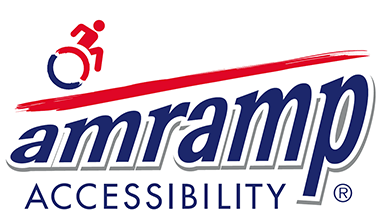Summer travels are often overwhelming — trying to beat the heat while also taking on never-ending lines at the airport can be the makings of wishing you’d never left home. For wheelchair users, there is the added stress of being sure that all accommodations are met to ensure a safe and comfortable experience.
Wheelchair users and folks facing mobility issues may find these tips & tricks from Creditcard.com’s article “The fully accessible guide to flying for people with disabilities” helpful to make their flying ordeal more pleasant.
- Be sure to research all airline choices fully before purchasing tickets
Each airline offers different accommodations, so looking into what can be provided prior to purchasing (generally non-refundable) tickets is the best bet. Major airlines such as Delta and United Airlines are equipped with many services to aid those with mobility concerns.
Delta airlines has a special group of employees, known as Complaint Resolution Official (CRO), that are specifically trained in understanding the Federal Aviation Administration (FAA) and Department of Transportation (DOT) disability regulations. United Airlines allows you to submit a request online for things such as
- obtaining an aisle chair,
- being seated in a chair with a moveable aisle armrest,
- adjoining seats with a care-provider, and
- extra legroom.
- Call your airline, hotel, and TSA ahead of time to ensure a smooth process
Once you book your ticket, it’s imperative to communicate with those you are traveling with concerning the accommodations you desire. Most are willing to work with you regarding any accommodations needed as long as you call ahead. This gives them time to prepare any equipment or employees that may be needed to assist you. You can also ask for tips on how to make your travel experience easier, such as the boarding process and TSA pre-check.
- Take your equipment into consideration
There’s always a chance for something to go not as planned; even the smallest travel setback can cause turmoil. Creditcards.com suggests these considerations for those with a physical disability:
- Use your own wheelchair or mobility equipment, and check it at the gate. While airlines will provide you with one, using your own equipment can eliminate wasted time and stress from switching from yours to theirs and vice versa.
- Bring spare parts. If it could break, assume that it will and prepare accordingly.
- If your wheelchair needs wet-cell batteries or anything that typically isn’t allowed on airplanes, make sure to call ahead and talk with TSA about your equipment needs.
- Find the right luggage. You want luggage that is easy to handle, protects your medical equipment, and is easy to find in a sea of suitcases.
Many problems that arise at the airport are unavoidable whether it’s lost luggage or a delayed flight, but remember the small things that can be done to prevent the headaches that could’ve been avoided.
When you're looking for accessibility products, you need a company with experience. Amramp is familiar with the guidelines of the Americans with Disabilities Act as well as local zoning laws.
Certified Aging in Place Speciliasts (CAPS) are trained by the National Association of Home Builders on remodeling and retrofitting existing homes for special needs.
Amramp can evaluate any home to determine what changes are needed to make the living space as accommodating as possible in the years ahead.
Check out Amramp’s full line of accessibility solutions or take advantage of Amramp’s FREE evaluation to review your needs and lay out a plan that is right for you by calling 888-715-7598 or emailing to [email protected].





